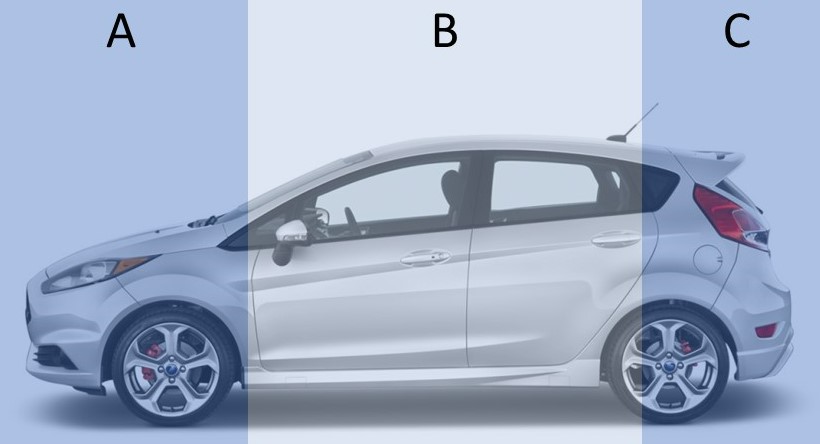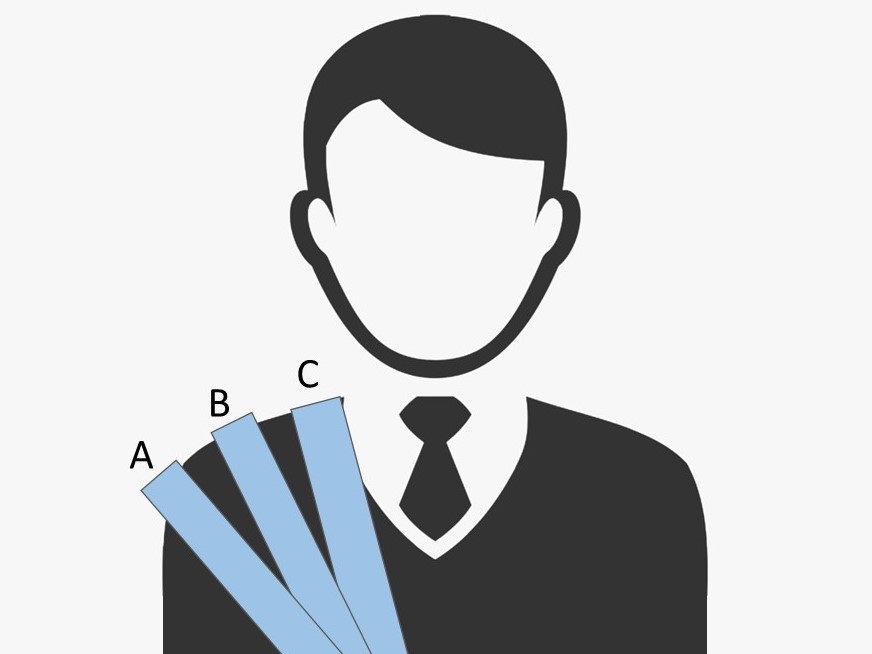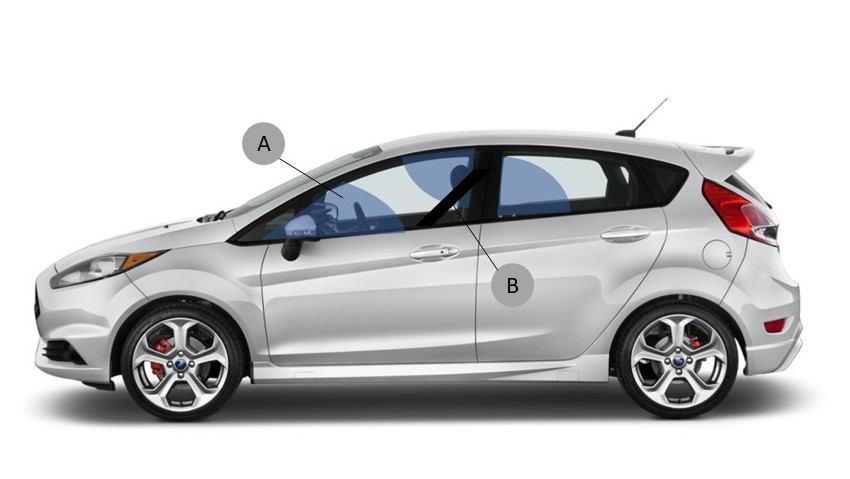Car safety, protection and crumble zones
Every vehicle has several crumple points designed into the car frame to dissipate the energy when the car is in a accident. These zones increase the time of the impact during a collision by controlling deformation. This is required to slow down the energy/ force before it hits you. This has a direct effect on you and can result that you are not seriously injured
 Crumble zones
Crumble zonesZones
- A (Front crumple zone): Less Vulnerable (Depends on the distance from the front to the driver)
- B (Side crumple zone): More vulnerable (Not enough distance to the driver)
- C (Rear crumple zone): Less Vulnerable (Depends on the distance from the back to the driver)
Car vulnerable areas
The cars most vulnerable zones are next to the driver as there is not enough space area to absorb the force when a car drives into you from the side
Safety Belt
Safety belt is designed to keep you safe during an accident. It does this by pulling you closer to the seat so that you dont fly head first through the window or stearing wheel. Always ensure the seatbelt is as close to your neck as possible (C in the picture)
Types of seat belts
- Two point seat belt: The belt is connected with two points (over the waist). Typically found on the middle back seat.
- Three point seat belt: The belt is connected with three points (The waists and one shoulder).
- Four point seat belt: The belt is connected to four points. Usually found in racing or sport cars (over the waist and both shoulders).

Test the seat belt tensioner and stop mechanism
The belt tensioner sits in the seatbelt assembly. This is an automatic system which pulls the belt hard in the event of a crash.. To test if the tensioner works do the following
- Sit on the seat
- Pull the seat belt across you and click it in
- Pregnant woman: Put the belt under your belly to prevent the baby from being squeezed.
- Pull on the seat belt so that you can hear a click and the belt stops
- If the belt stops the seatbelt tensioner works
- Statistics: 40% of drivers who die in traffic were not using a seat belt.
 A: Airbags
B: Safety belt
A: Airbags
B: Safety beltAirbags and safety
Airbags are designed to inflate when your car is in an accident. Airbags can increase your chances of survival and reduce injury. Airbags however can also cause injury if you are not positioned correctly in the car
Consider the following safety tips for airbags
- 25 cm: Its advised to site at least 25cm away from the airbag to reduce risk of injury when the airbag inflates
- 0.1 seconds : The airbag inflates fast. It only takes 0.1 seconds to fully inflate
- Speed 20-30km/h: Manufactures set the activation of airbags around 20+30km/h. This means that your airbags will only inflate at his or higher speeds. If you drive into another car or traffic pole at lower speed it will not activate
- Disconnect airbags : When a child sits on the front passenger seat its advised to disconnect the airbag to prevent injury
Whiplash
Whiplash occurs when a car droves into you from behind (Rear-end-collision) and your head is thrown vigorously backwards which results that your neck is damaged.
